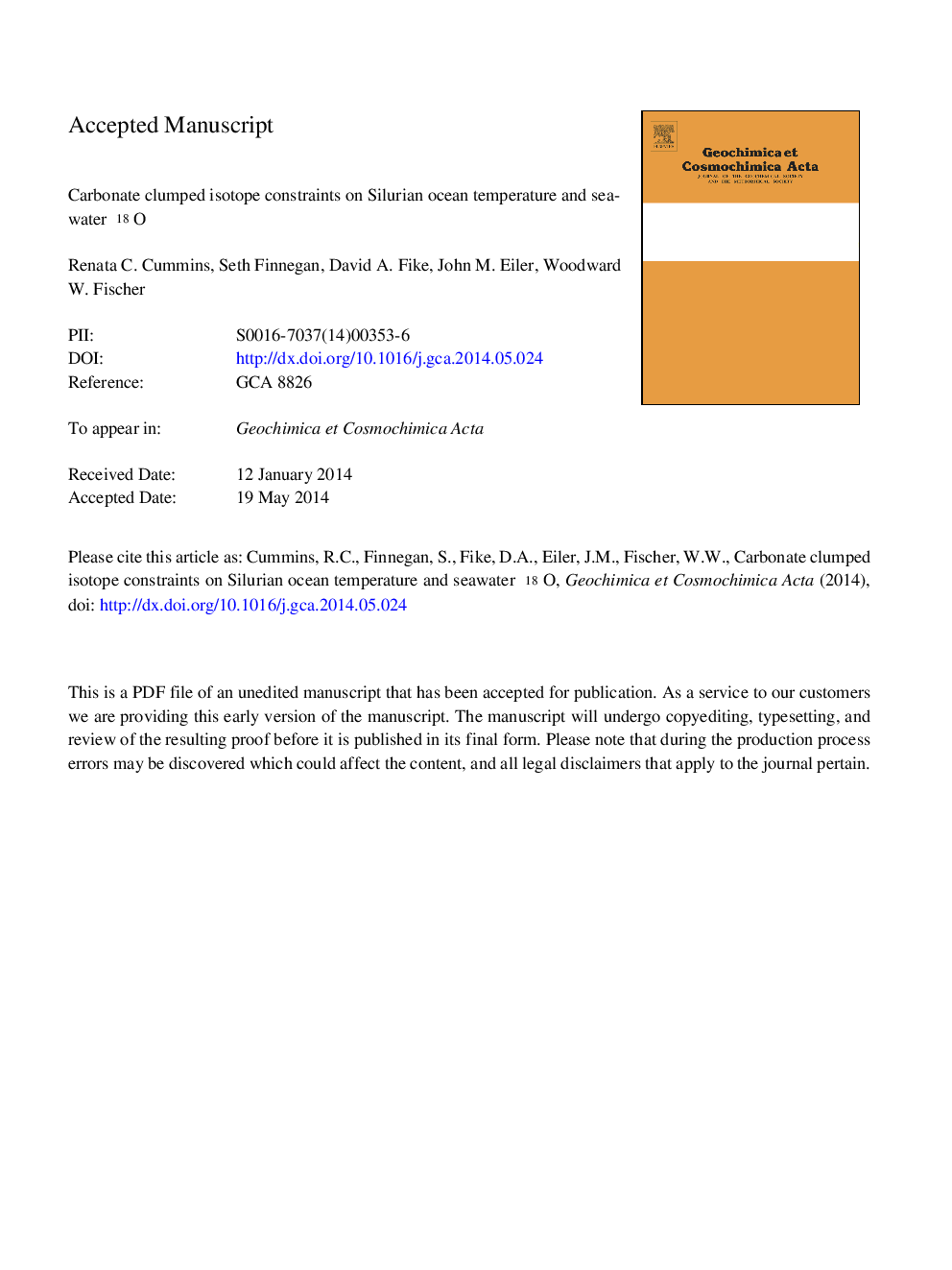| Article ID | Journal | Published Year | Pages | File Type |
|---|---|---|---|---|
| 6438360 | Geochimica et Cosmochimica Acta | 2014 | 47 Pages |
Abstract
We measured the clumped isotope composition of a large suite of calcitic fossils (primarily brachiopods and corals), sedimentary grains, and cements from Silurian (ca. 433 Ma) stratigraphic sections on the island of Gotland, Sweden. Substantial variability in clumped isotope temperatures suggests differential preservation with alteration largely tied to rock-buffered diagenesis, complicating the generation of a stratigraphically resolved climate history through these sections. Despite the generally high preservation quality of samples from these sections, micro-scale observations of calcite fabric and trace metal composition using electron backscatter diffraction and electron microprobe analysis suggest that only a subset of relatively pristine samples retain primary clumped isotope signatures. These samples indicate that Silurian tropical oceans were likely warm (33 ± 7 °C) and similar in oxygen isotopic composition to that estimated for a “modern” ice-free world (δ18OVSMOW of â1.1 ± 1.3â°). This result joins the growing body of evidence that suggests the δ18O of Earth's ocean waters has remained broadly constant through time.
Related Topics
Physical Sciences and Engineering
Earth and Planetary Sciences
Geochemistry and Petrology
Authors
Renata C. Cummins, Seth Finnegan, David A. Fike, John M. Eiler, Woodward W. Fischer,
